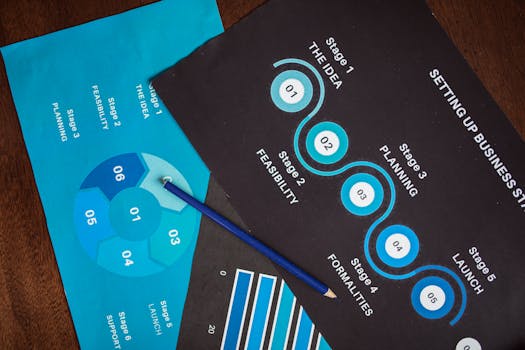Writing a business plan doesn’t mean creating a 40-page document no one will read. For an early-stage founder, a good business plan is a short, clear map that helps you understand what you’re building, who it’s for, and what it’ll take to make it real.
Here’s how to write a business plan that’s actually useful, and doesn’t feel like homework.
1. Start With the Vision (1–2 sentences)
Why are you starting this business? What’s the change you want to make in the world?
This should be super clear and short. Example:
“Make small business payroll easier and more affordable for solopreneurs in the US.”
Not: “To become a leader in payroll software.”
Write this down to stay grounded, this is your “why.”
2. Define What You’re Offering
What exactly are you building? Software? A service? A marketplace? Write it down in plain English.
Break it into two parts:
- Product: What the user touches (e.g. mobile app, physical goods, service)
- Value: What it helps them do better or faster
Example:
Product: A simple app that helps freelancers track income and prepare quarterly tax estimates
Value: Reduces stress during tax season and avoids penalties
3. Know Your Customer (Be Specific)
Don’t write “everyone.” Get painfully specific about your first target users.
Create a mini-profile:
- Who are they?
- What do they do every day?
- What frustrates them?
- What would they Google to try to fix that?
Example:
“Independent yoga instructors in the US, aged 28–40, who do their own scheduling, client payments, and taxes.”
Bonus: Actually talk to 5 of these people before writing this.
4. Sketch the Business Model
How will you make money? There are a few common models:
- One-time payment
- Subscription (monthly/yearly)
- Commission/transaction fee
- Freemium with paid upgrades
Write down:
- Your price
- How often customers pay
- Any key costs to deliver the product/service
Example:
$19/month subscription. Customers pay via Stripe. My cost is ~$4/month per user for hosting and email support.
5. List the Key Milestones
You don’t need to plan 5 years out. But you should have a rough map for the next 6–12 months.
Break it into 4–5 big milestones with rough dates:
- Build prototype
- Test with first 10 users
- Launch public beta
- Hit first $1K in revenue
- Apply to accelerator / raise pre-seed
These help you stay focused and tell others (co-founders, advisors, even investors) what you’re aiming for.
6. Outline Financial Basics
You don’t need a full spreadsheet yet. Just estimate:
- What it will cost to build and run for the first 6 months
- How much you think you can earn
- How much money you’ll need (if any)
Write it like this:
“Initial development: $5K. Hosting/tools: $200/month. Expect to earn $1K/month by month 6. Will need $10K total to get to break-even.”
Once you’re clearer, you can build a simple financial projection in Google Sheets.
7. Summarize in a One-Page Snapshot
Your final plan doesn’t need to be long. One page is enough to start.
Here’s a format you can copy:
- Vision
- What We’re Building
- Target Customer
- Business Model
- Milestones (next 6–12 months)
- Estimated Costs & Revenue
This is your roadmap. Use it to check your direction before building anything or spending money.
Bonus Tools
- Lean Canvas (https://leanstack.com/leancanvas) – One-page business plan template for startups
- LivePlan – Guided business plan builder with examples
- Google Docs / Notion – Perfectly fine for writing your first version
Final Thought
Don’t over-polish your first business plan. It’s not for investors yet, it’s to help you think clearly and make decisions faster. Keep it messy, update it as you learn, and treat it like a living document.


